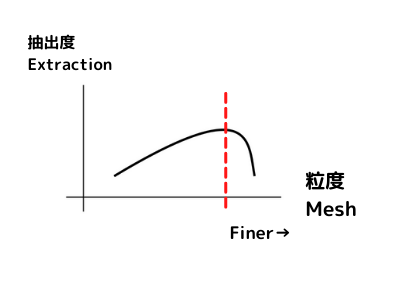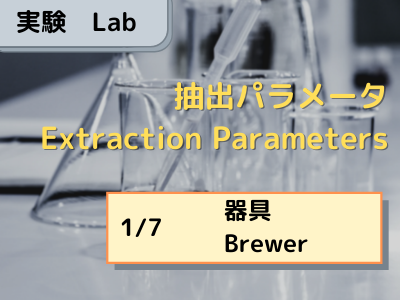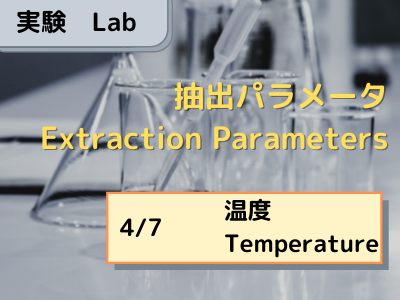Hi everyone!
In this third post of the coffee extraction parameter series, we will look in to grind size. Please check this series summary page as well.
You may have heard that the first thing you should do to up your coffee game is to grind your coffee beans fresh. I fully agree with this advice, it was an eye-opening experience. But once you start grinding, you may see that how you grind your beans make a big difference.
What changes when the grind size changes? How should you adjust it? I would like to try to answer these questions in this post.
Parameter Basics
Grind size, also referred to as the mesh, is the particle size of your ground coffee. Also this is slightly a deeper topic but it also is concerned about the distribution of your particle size.
When you grind coffee, the surface area of your coffee increases. The finer you grind the more surface area you get, and the easier it is to extract. Does that mean it’s better to grind as fine as possible? Well actually, no. As I wrote in the ratio parameter post, over extraction tends to produce unwanted flavors. There is roughly an optimal size for each brewer.
The recommended grind sizes for each brewer from finest to coarsest are;
- Espresso
- Pour-over drip
- French press

In general, it’s preferable to have a uniform distribution of particle size, ie all particle sizes are as close to each other as possible. This is so that you can more uniformly extract coffee from all the grounds.
(By the way, when you go really deep in to espresso brewing, some say that having a slight variance in distribution is good. But this is very high level stuff.)
Are you kind of alone when adjusting grind size?
Grind size may be something that most beginners get confused about. The reason is that communicating grind size is so difficult to do. We are talking about sub-millimeter size particle which each have different shapes. On top of that distribution of particle size is very difficult to measure. I still am not a 100% sure that I have got the best grind size dialed in.
I suggest using the recommendation which usually comes with each grinder as a starting point. From there, you need to keep adjusting depending on the taste of your coffee. If lack some body, try grinding a little finer. If you feel some harshness, try dialing back slightly coarser.
If you grind too fine, there is a point at which your extraction level plummets drastically. Basically the fine grinds compact together so much that there is no path for the water to get through. As this point the water cannot equally saturate the grounds and you end up having over extraction from the grounds at the surface resulting in a harsh hollow cup.

Fines
As a final not on grind size, you may run it to the term “fines”. This refers to the dust-like particles which are much smaller than the intended grind size. When you grind coffee beans what you are actually doing is crushing them. When the bean breaks apart, they produce tiny shards which end up as fines.

Fines tend to lead to over extraction because of their size. So it is better to have as few fines as possible. Some people like to use a sieve to separate away the fines before brewing. I personally don’t like the idea of wasting my coffee so I have not tried this, but it may be something that would be interesting to look into.
By the way, you tend to get more fines with darker roasted beans than lighter ones. This is because the darker roasted beans contain less moisture and thus tend to be more brittle.
Links to other post in the series
The other parameters are discussed in these other posts.




コメント